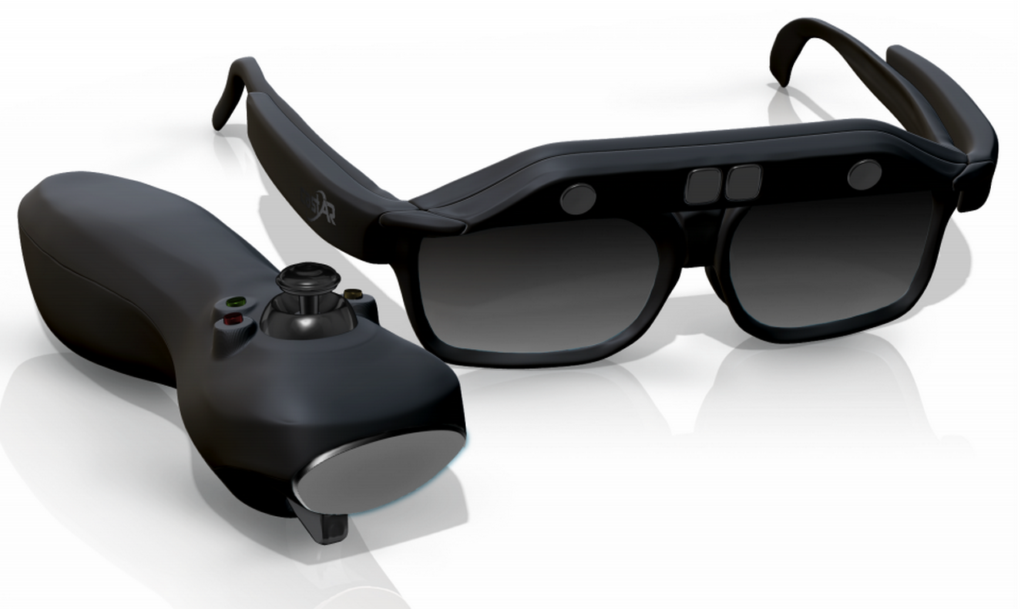With Microsoft currently focusing on enterprise customers with its HoloLens Development Edition augmented reality headset, startup castAR will have a relatively open playing field to launch its AR gaming platform in 2017.
The company has been beefing up its development team by enlisting Eat Sleep Play (makers of WarHawk and Twisted Metal) to help create games. CastAR previously hired top talent from the Avalanche development team, which had worked with Disney Interactive to create the bestselling Disney Infinity franchise. Eat Sleep Play will collaborate with Avalanche at the Salt Lake City studio.
CastAR was founded in 2013 as Technical Illusions after Jeri Ellsworth and Rick Johnson left Valve Software’s augmented and virtual reality team. Funded by Playground Global, the company is developing an augmented reality entertainment platform that blends digital characters with the real world.
The company recently hired gaming and technology industry veterans Peter Dille as CMO, Mel Heydari as head of talent and Arnie Sen as vice president of engineering. They join Steve Parkis, COO and president, and CEO Darrell Rodriguez (former president at LucasArts). Rodriguez talks to [a]listdaily about the startup and how marketing an augmented reality platform may be a little bit easier thanks to Pokémon GO‘s success in this exclusive interview.

What are the advantages of marketing augmented reality gaming compared to virtual reality?
It’s our view that augmented reality is more accessible, which also makes it a bigger opportunity. Rather than shut you off from the world, AR takes the world around you and brings your imagination to life right on top of it. There’s no doubt you can create some cool experiences with VR, but it’s not for everybody. We think AR experiences will have mass market appeal.
How has the success of Pokémon GO and its mainstream exposure helped lay the groundwork for castAR’s launch next year?
The Pokémon GO phenomenon will be tremendously beneficial in helping to articulate what’s possible with AR gaming. It’s a terrific example of bringing the real world together with a fantastical world. To date, consumers have been exposed to a lot of VR marketing but not a lot of AR. We see that changing next year and by then, consumers will have been well conditioned to new gaming experiences.
While there’s a lot of activity in VR, AR has been mostly left to enterprise and business. Why did you decide to explore AR gaming?
Our team’s background is in gaming. Our founders, Jeri Ellsworth and Rick Johnson, have long and distinguished careers in game development. I’ve run gaming companies. Steve Parkis, our COO, has run gaming companies. It’s our view that gaming technology drives tech adoption. So we’ll build an installed base via gaming and expand out from there.
What does the Eat Sleep Play team bring to the table when it comes to AR gaming?
The team from Eat Sleep Play has a 20-year track record of building critically acclaimed and commercially successful games. They’ve worked with world class IP and have built launch titles for every Sony gaming platform (PlayStation 1, 2, 3 and PSP) and they’ve recently added mobile to their resume. They know how to deliver.
How has Avalanche’s background in working with Disney Infinity helped with exploring augmented reality?
Steve and I both have backgrounds at Disney, where we learned that story and character transcend the medium. We think characters will play a big role in the success of our offering. The Avalanche team, having worked with Disney and on Infinity, honed the ability to create amazing characters that come to life in AR and drive amazing engagement.
How will the reputations these two developers have with mainstream gamers help you deliver and market quality games?
You have to have great content to compete in this space and the teams from Eat Sleep Play and Avalanche have first-rate reputations among gamers. We’re exceptionally proud they’ve decided to join the team here at castAR to bring our system to market.
What does bringing gaming into the real world open up creatively?
One of AR’s greatest strengths is the ability to interact with other players—not just virtually, but face-to-face. Social gameplay has been missing from modern gaming—really since the Wii. We will fully leverage this in the games we make available to our customers
VR is targeting more hardcore PC gamers and now console gamers. Who are you targeting with castAR?
We’re not going into too much detail with our marketing plans at this time. But we can confidently say that we think anyone who likes gaming will want to keep an eye on castAR next year.

